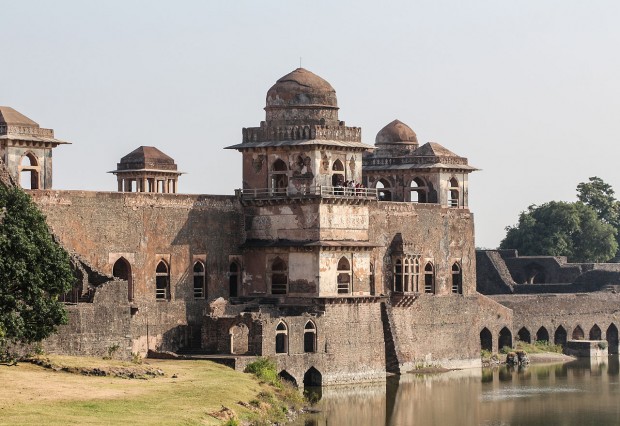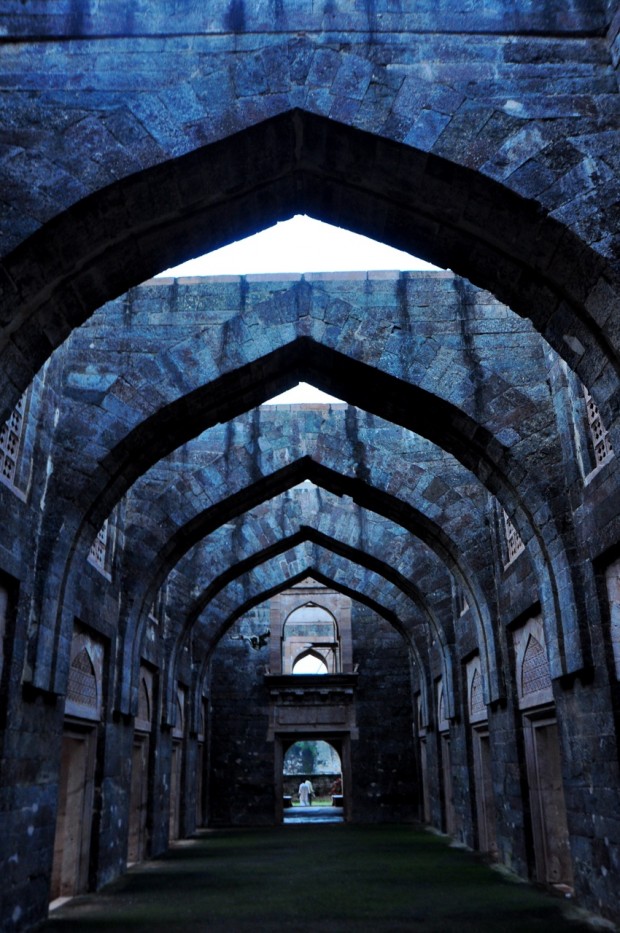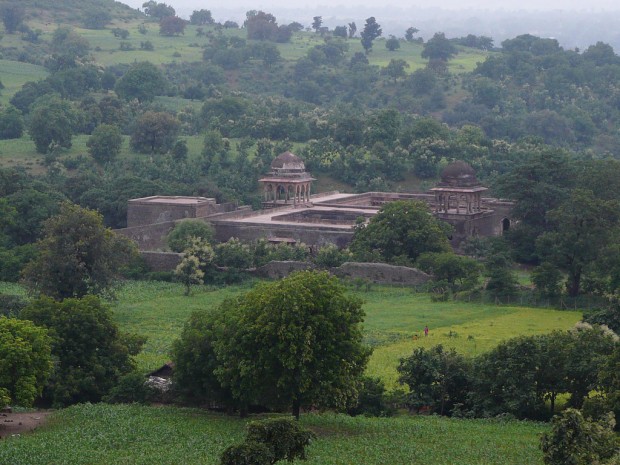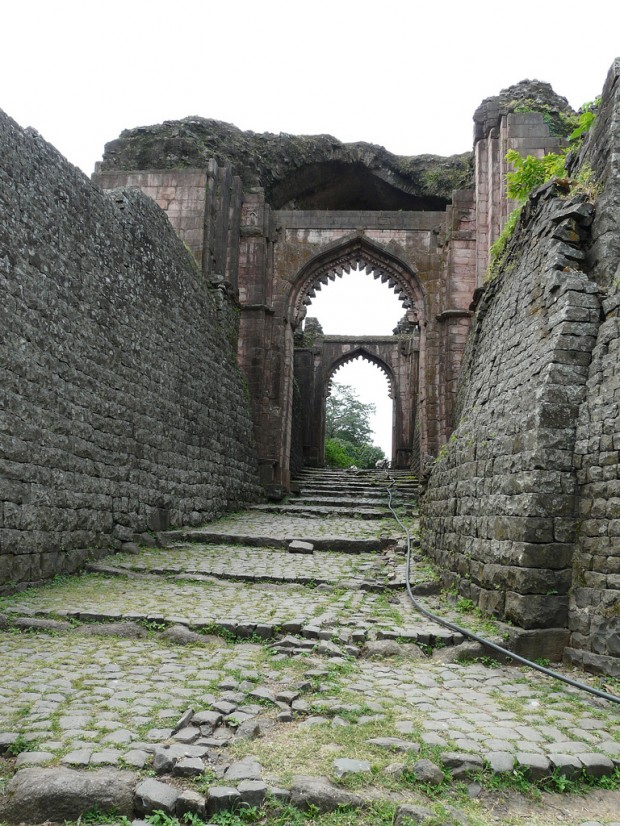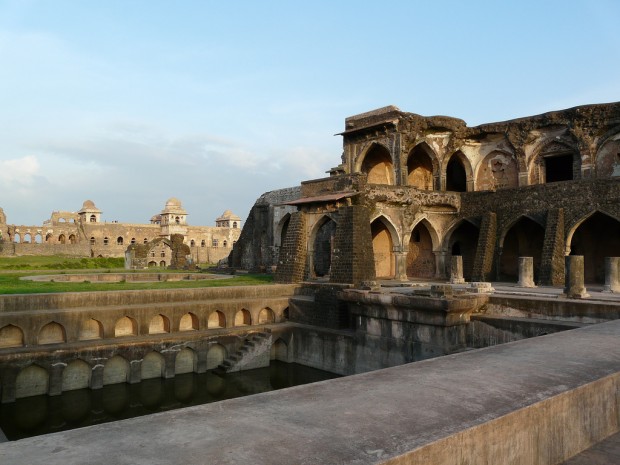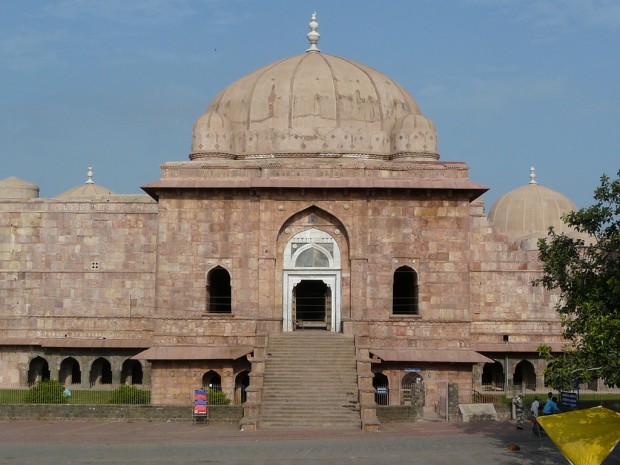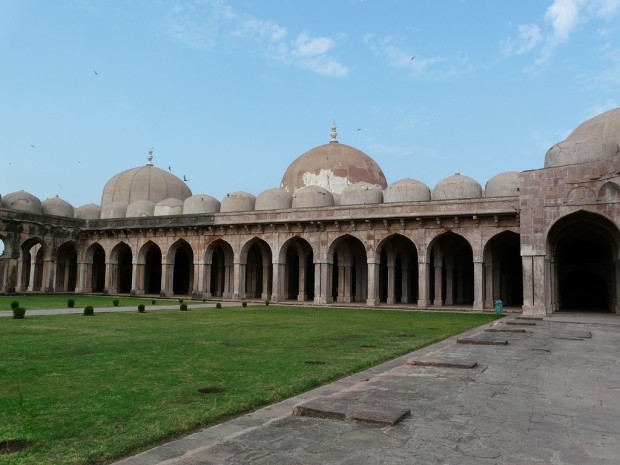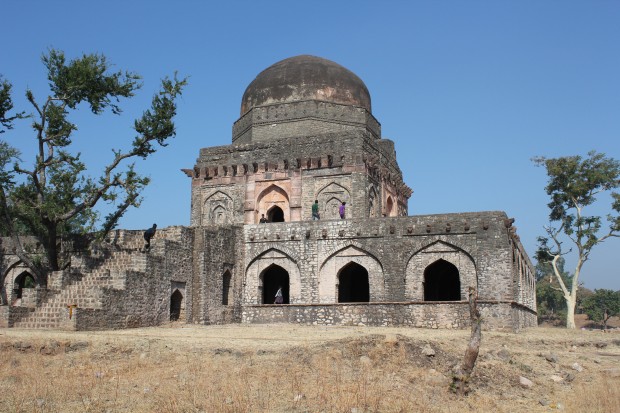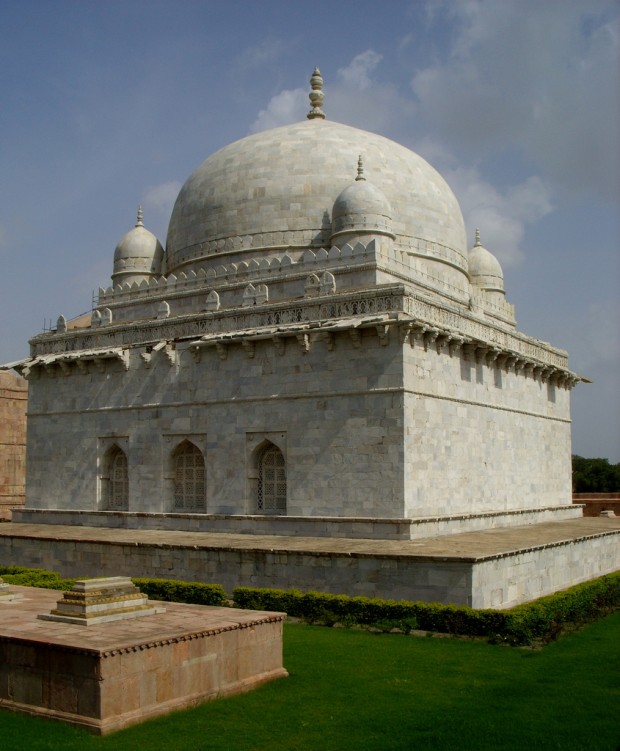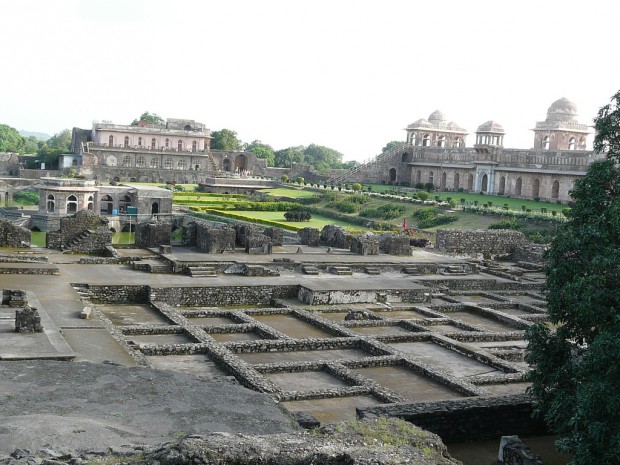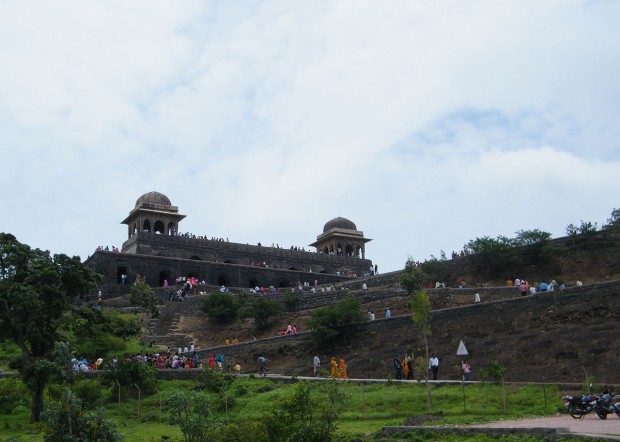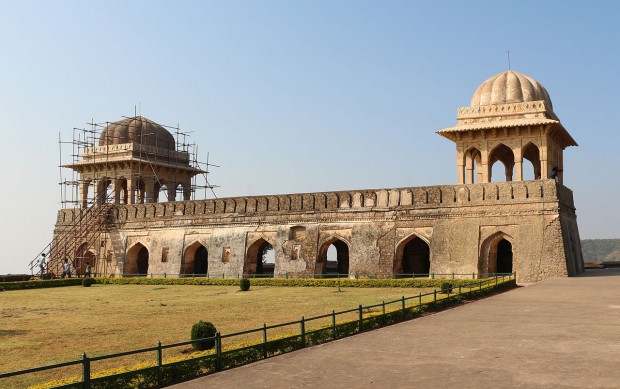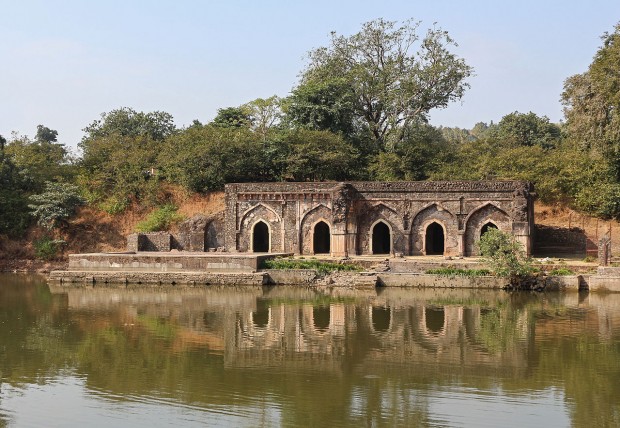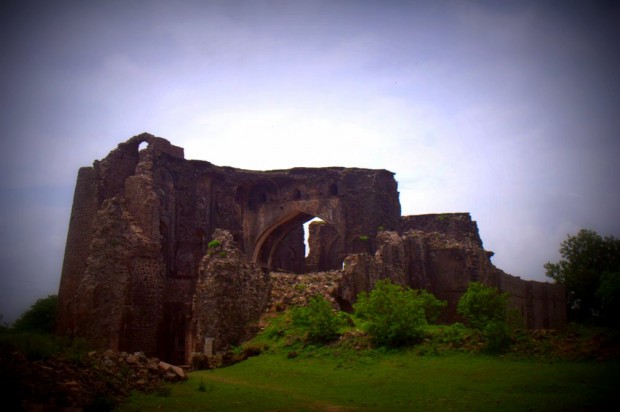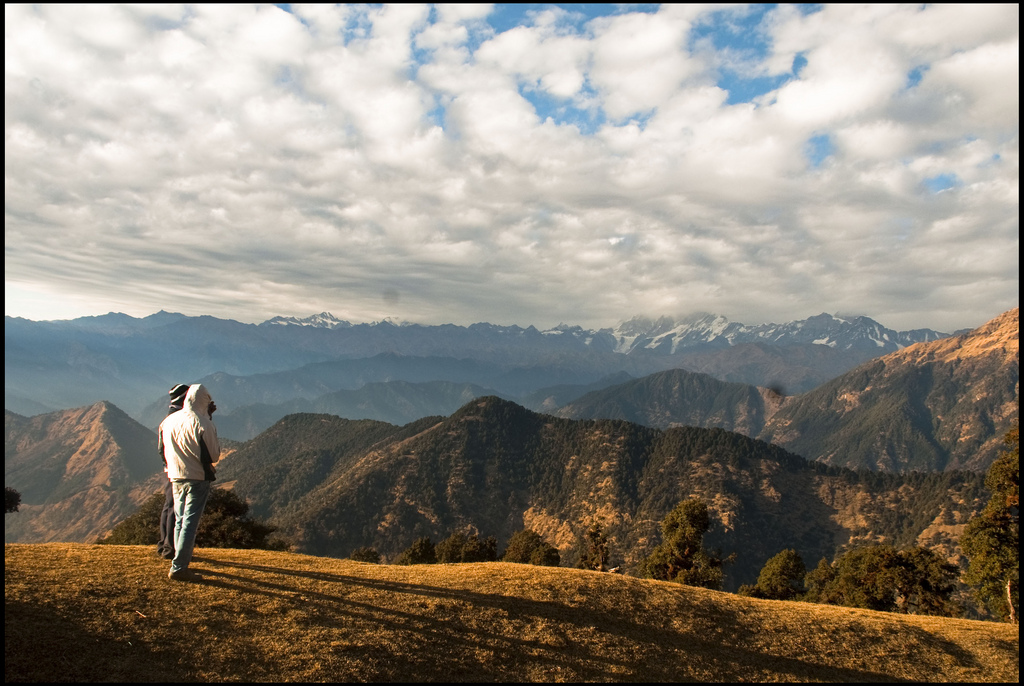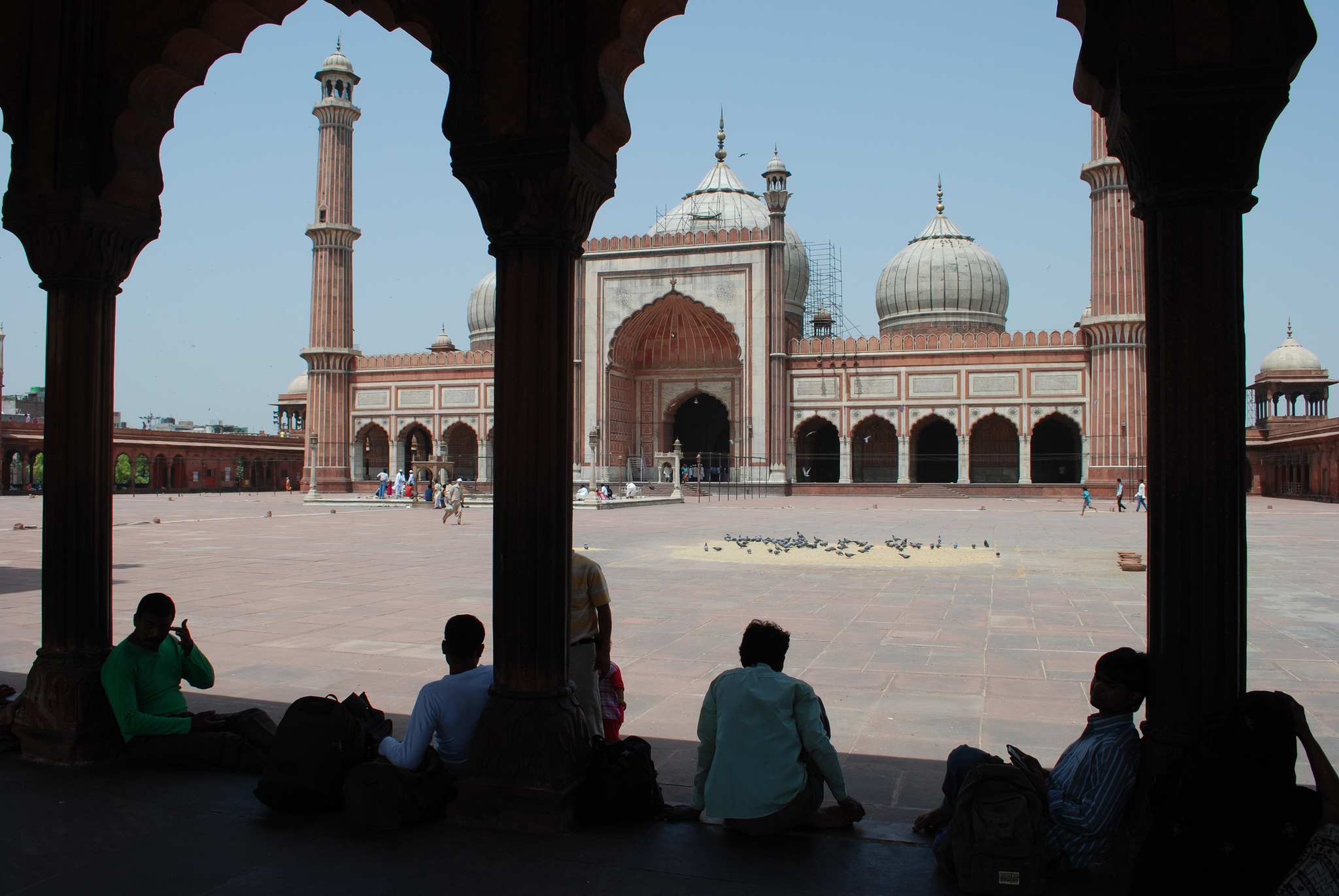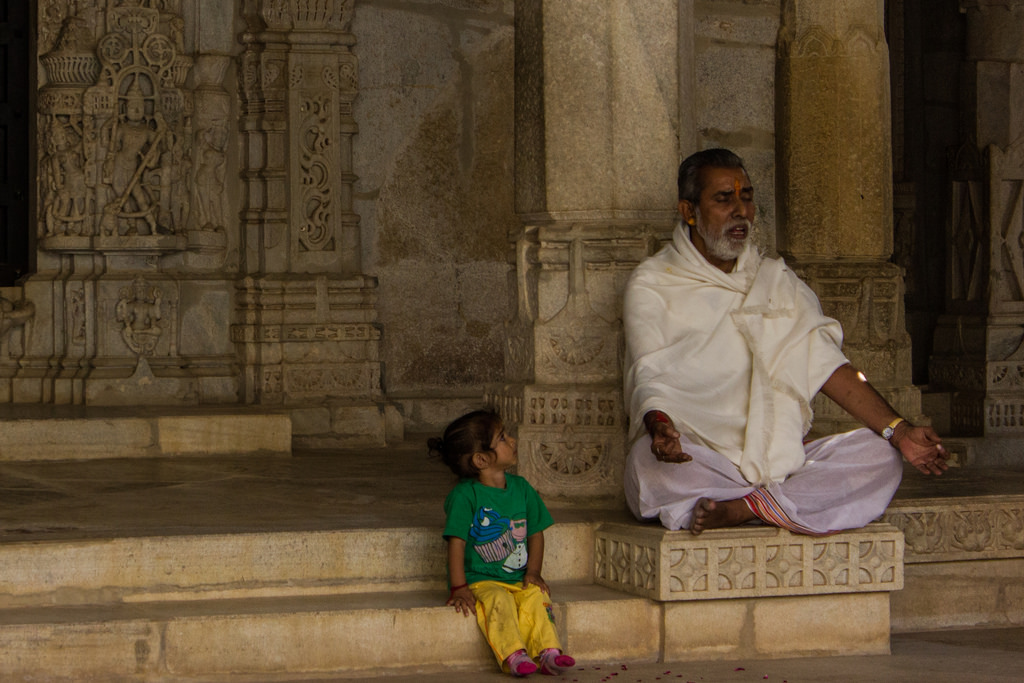The abandoned city of Mandu from the Mughal Era, once was a center of India’s Muslim state on the north of the country. It is settled in the western part of the region of Madhya Prades.
Mandu in India is one of the most exotic places which is available for today’s travelers. It is abandoned for 400 years now, but it is well preserved. The landscapes of Mandu are incredible, well you can say unreal.
Mandu, containing the palaces, tombs, mosques and monuments is a real historical treasure.
Jahaz Mahal (Ship Palace)
This palace is situated between two artificial lakes. The name comes from the fact that Jahaz Mahal appears like a ship floating in water of the lakes.
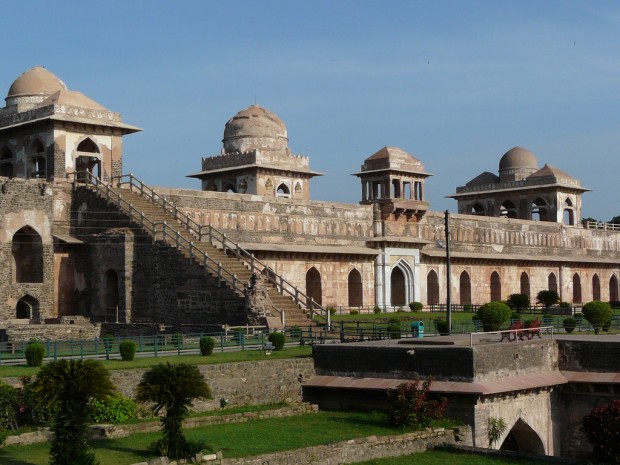
Image by Varun Shiv Kapur via Flickr
By Bernard Gagnon (Own work) [GFDL or CC-BY-SA-3.0-2.5-2.0-1.0], via Wikimedia Commons
Baz Bahadur’s Palace
A palace built in 16th century by Baz Bahadur. It is famous for the large courtyards encompassed by large halls and high terraces. It is located below Roompati’s Pavilion and can be seen from the pavilion.
Image by Varun Shiv Kapur via Flickr
Dilli Gate
Dilli Gate used to be the main gateway into the Mandu plateau.
Image by Varun Shiv Kapur via Flickr
Jal Mahal (Water Palace)
The water palace in mandu is built by Jahangir near the Munji Lake.
Image by Varun Shiv Kapur via Flickr
Jami Masjid
Jami Masjid was inspired to be built by the great mosque of Damascus. This structure is striking in both, simplicity and architectural style, with grand entrances and large courtyards.
Image by Varun Shiv Kapur via Flickr
Image by Varun Shiv Kapur via Flickr
Dai-ka-Mahal
This is a mausoleum standing on an edifice below which were rooms with five arched openings for the keepers.
Image by Arian Zwegers via Flickr
Hoshang Shah’s Tomb
Hoshang Shah’s Tom is India’s first marble structure. It is one of the most refined examples of Afghan architecture. It is unique in every way and it includes wonderful proportioned dome, intricate marble lattice work and porticoed courts and towers. It has been a template for the construction of Taj Mahal.
Kapur Talao
Image by Varun Shiv Kapur via Flickr
Roopmati’s Pavilion
The main purpose of this structure in Mandu was as an army observation post.
By Abhishek727Abhishek Mishra (Own work) [CC-BY-SA-3.0 or GFDL], via Wikimedia Commons
By Bernard Gagnon (Own work) [GFDL or CC-BY-SA-3.0-2.5-2.0-1.0], via Wikimedia Commons
Rewa Kund
This is a reservoir constructed by Baz Bahadur for supplying water to Rni Roompati’s Pavilion. It is located below the pavilion.
By Bernard Gagnon (Own work) [GFDL or CC-BY-SA-3.0-2.5-2.0-1.0], via Wikimedia Commons
Gada Shah’s House
Image by Jasvipul Chawla via Flickr

